
When my husband and I were newlyweds, date nights at home often involved $5 pizza and a sausage-shaped tube of enriched wheat flour, sugar, and partially hydrogenated soybean oil — aka store-bought chocolate chip cookie dough.
Back then, I thought the cost of junk food was nothing more than pennies, which I was more than happy to grab from our loose change jar.
It wasn’t until I began struggling with health issues that I realized the real cost of cheap food.
Sure, coupon gurus have shown us time and again how to get $196 in groceries for $2.33, but only by focusing on highly processed foods that are nearly devoid of nutrition. This approach has hidden costs for our health, the environment, and even the farmers we rely on to feed us not just today, but tomorrow, and next month, and next year.
Fortunately, there are ways to save money on nutrient-dense, real food that is good for us, our bank account, our farmers, and our world. With that in mind, I’d like to share some tips and strategies I’ve found most helpful over the years.
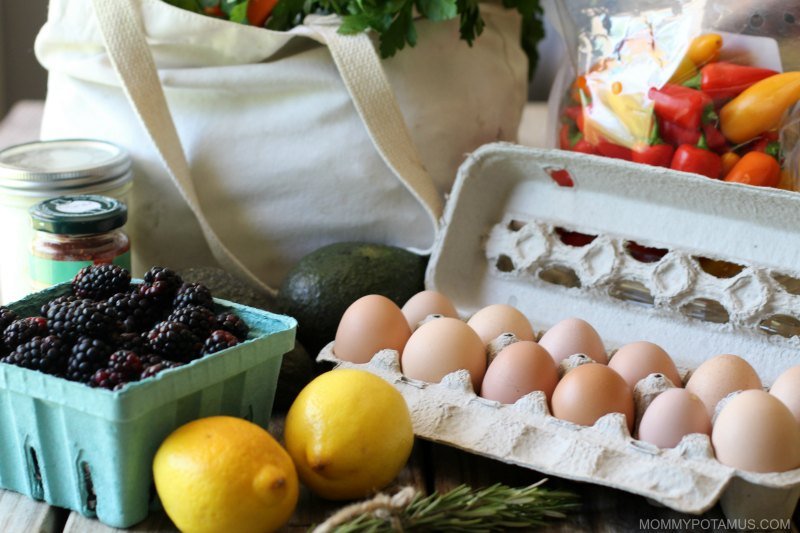
21 Tips for Eating Healthy On A Budget ^
As my family’s budget has changed over the years, we’ve used many different approaches to saving money. When my schedule is full and time is short I focus on ways to buy healthy convenience foods at wholesale prices, and when I have more time I make my own.
You’ll find a mix of strategies below that I hope will be helpful to your unique situation.
1. Put Scraps To Good Use
Instead of tossing veggie and fruit scraps, use them to create nutritious and flavorful broths, therapeutic teas, spice blends, cleaning supplies and more . . . all with just a tiny bit of effort, of course. Here are some ideas:
Lemon and orange peels can be used to make:
- Homemade lemon extract
- Lemon pepper seasoning
- Citrus-infused cleaning vinegar
- Limoncello
- Find more uses for lemon peels here
Veggie scraps:
Onion skins, carrot tops and skins, celery leaves, bell peppers, herb stems and leeks can be used to add flavor and nutrition (particularly minerals) to homemade broths:
One thing to keep in mind: Cruciferous veggies tend to make broth bitter so it’s best to avoid them. When simmered for a long time, green beans and zucchini can, too.
Banana peels:
Leftover banana peels can be used to make bedtime tea using this method. They’re rich in an amino acid that helps make serotonin (a relaxing neurotransmitter) & melatonin (often called the sleep hormone), and they also contain magnesium and potassium, which help to relax muscles.

2. The Scoop On Farmer’s Market Deals
In every town I’ve lived in since my children were born, I’ve made it a point to buy from local farmers when possible. I love supporting them directly and seeing their families grow as their little ones help out. I also love that because I’m a regular, they’ve taught me a few ways to save on produce.
After many years of being a regular at my local farmers market (or markets, really, since I’ve lived in a few places), here are some tips I’ve learned:
- Let your favorite farmers know that you’ll buy their ugly produce. I once bought 20 pounds of juicy organic tomatoes for $20 because the skins were a little bruised, which didn’t bother me at all because I planned to peel the skins and make stewed tomatoes.
- Swing by just before closing. I usually shop early to get some of my fave items, then run a few errands and swing back by on my way home. If farmers still have a lot of produce left and the market is about to close, they’ll often discount it so that they don’t have to haul it back home.
- Offer to buy a case. Sometimes this allows farmers to offer a 15-20% discount (or more!) that wouldn’t make sense for their business otherwise. I offer to buy cases when I’m planning for a large gathering or want to preserve/ferment seasonal produce.
3. No Farmers Market? Buy Ugly Produce Online
Misfits Market delivers organic produce directly to your door at a 40% discount. They sell imperfect, occasionally odd-looking fruits and veggies that won’t get sold in stores but fill the need for the budget conscious, healthy eating family.
Get 25% off your first box with coupon code COOKWME-IQ4XEZ

4. Make A Meal Plan
With just a little planning, you can save a lot of time spent standing in front of the fridge and wondering what to make for dinner. And you can save money, too, because instead of going to the grocery store and buying a bunch of extra ingredients that will go bad before you figure out what to do with them, you’ll go to the store with a detailed grocery list of what you actually need.
Here are some tips to get you started with meal planning, or you can save your afternoon and subscribe to Real Plans for as little as $1.50 a week.
If you’re not familiar with it, Real Plans is an app that allows you to choose what kind of recipes you want (paleo, gluten-free, keto, etc.), then customize even more based on food sensitivities and more. Then, when you have your meal plan just the way you want it, Real Plans creates a complete grocery list that you can pull up on your phone at the grocery store.
Click here to learn more about Real Plans
5. Prioritize The Clean 15
If it’s not in my budget to buy only organic, I prioritize healthy meats and fats (dairy and traditional cooking fats like lard and tallow), then produce.
Not all produce is the same, though. When grown conventionally, some absorb a lot of pesticide residue, while others retain undetectable or very low levels. The Environmental Working Group tests produce every year and puts out a Clean Fifteen / Dirty Dozen list which details the best and worst product to buy conventionally.
The Clean 15
Even when grown conventionally, these items tend to have undetectable or very low amounts of pesticide residue:
- Avocados
- Sweet corn*
- Pineapple
- Onions**
- Papaya
- Sweet peas (frozen)
- Eggplants
- Asparagus
- Cauliflower
- Cantaloupes
- Broccoli
- Mushrooms
- Cabbage
- Honeydew melon
- Kiwi
* Corn is not actually a vegetable, it’s a grain. And some sweet corn varieties are now genetically modified, so it’s a good idea to ask questions before purchasing.
** Although conventional onions don’t have a lot of pesticide residue, they are sometimes sprayed with an anti-sprouting agent (maleic hydrazide) to extend their shelf-life. Since I like to use onion peels and skins in my bone broth, I opt for organic onions.
The Dirty Dozen
These fruits and veggies tend to be highest in pesticide residue when grown conventionally, so I make sure to buy organically grown instead.
- Strawberries
- Spinach
- Kale
- Nectarines
- Apples
- Grapes
- Peaches
- Cherries
- Pears
- Tomatoes
- Celery
- Potatoes
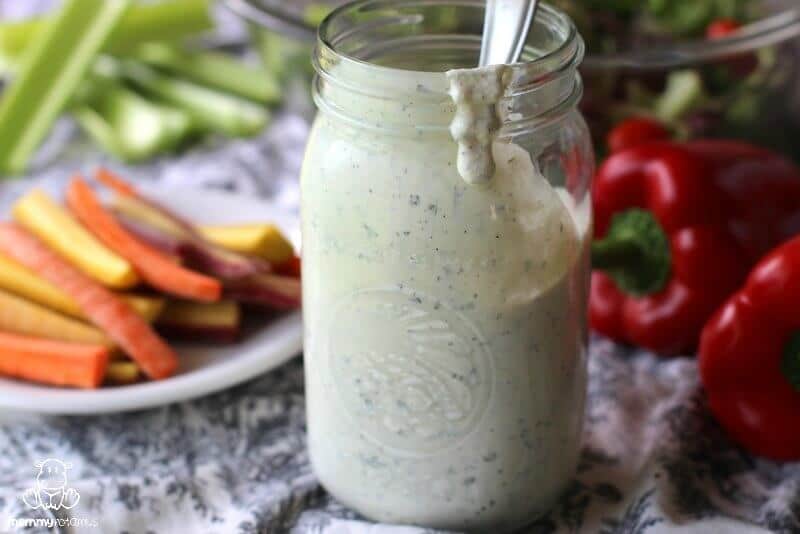
6. Eliminate Budget Busters
It’s not necessary to make everything from scratch, but it can be helpful to figure out what your budget busters – aka most expensive items – are and learn to make them. Expensive can mean a couple of different things here: What you spend the most on, or what’s most expensive in terms of cost per ounce.
Certain things – salad dressing for example – are pretty expensive on a cost-per-ounce basis, and super simple to make. Replacing just a few of the budget busters can lead to some pretty significant savings over time.
Here are some ideas to consider . . .
Condiments:
- Kid-approved ketchup
- Easy mayo
- Creamy caesar dressing
- 5 minute honey mustard
- Ranch dressing
- BBQ sauce
- Thousand-island dressing
- Teriyaki sauce
- Quick peach freezer jam
- Strawberry freezer jam
- Blackberry chia jam
Seasonings:
Store-bought breads:
Even “healthy” breads – gluten-free or not – often contain weird additives, so chuck them and and opt instead for these gluten-free/grain-free options or a simple no-knead sourdough that takes just minutes a day.
Any staples you use a lot of:
- Coconut yogurt is really easy to make
- There’s nothing quite like gluten-free sourdough bread (recipe coming soon)
- Can’t seem to stop eating Justin’s organic peanut butter cups? Make these instead.
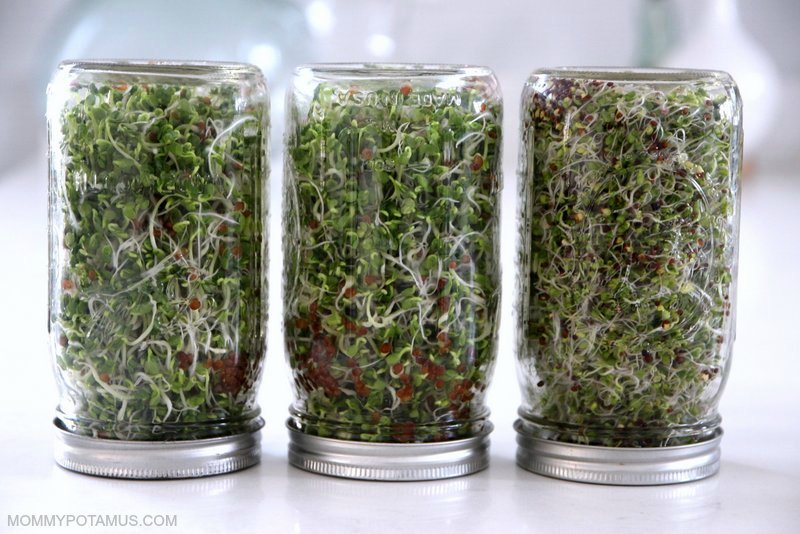
7. Grow Your Own (Even In Small Space)
There are several ways to grow healthy, fresh produce without planting a huge garden, although you can do that if you want to. (Here are my beginner gardening tips if you do.)
For example, you can grow fresh, nutritious sprouts in your kitchen without buying any special equipment. Broccoli sprouts in particular are rich in sulforaphane, which is a potent phytochemical with many benefits.
Also, you can grow salad greens in a pot on your patio/outdoor area. When you trim to harvest the leaves grow back, creating an endless supply for the season.
Herbs are also easy to grow both indoors and outdoors. Not only will freshly harvested herbs impart tons of flavor to simple meals, you can also dry the extra to use year-round. It’s much more affordable than those $5 containers at the grocery store.
8. Invest In An Instant Pot or Slow Cooker
Both provide a hassle-free way to transform inexpensive, tough cuts of meat like roasts into tender beef pot roast, pulled pork and more. No babysitting stuff on the stove or in the oven, just set and forget until mealtime.
Both are also great at making flavorful meals with other inexpensive ingredients that satiate while nourishing. Beans and lentils are both great in slow cooker chili, and oats can be cooked overnight for an easy, affordable breakfast.
I have an Instant Pot 7-in-1 Programmable Pressure Cooker that works as pressure cooker, slow cooker, rice cooker and yogurt maker in one. Unlike other products with iffy glazes or non-stick surfaces, the inside of the InstantPot is stainless steel.
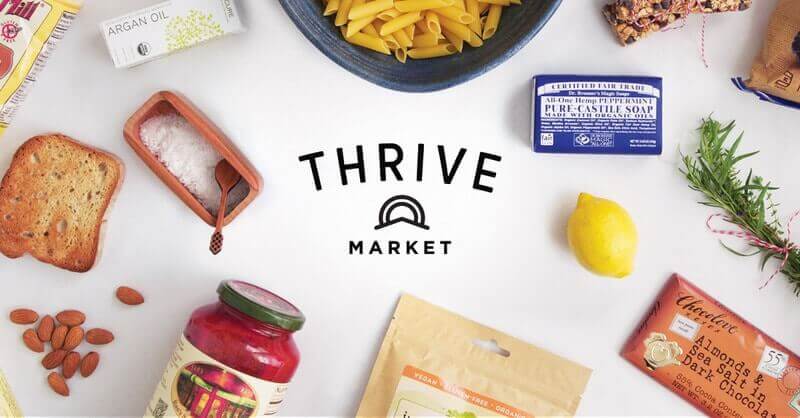
9. Get Wholesale Prices On Products Delivered To Your Door
Thrive Market is Whole Foods meets Costco, only you don’t even have to leave your house. For less than $5 a month ($59.95 annually), you can shop 3,500 of the world’s best-selling natural and organic products at 25-50% below retail prices.
If you’ve never heard of Thrive Market, I spent $59.85 on items that would have cost me $120.39 on Amazon.
Note: I believe so strongly in Thrive Market’s mission to make real food affordable that my family invested a small amount in their company when it was just getting started. It’s another way we’re choosing to vote with our dollars and increase access to healthy food.
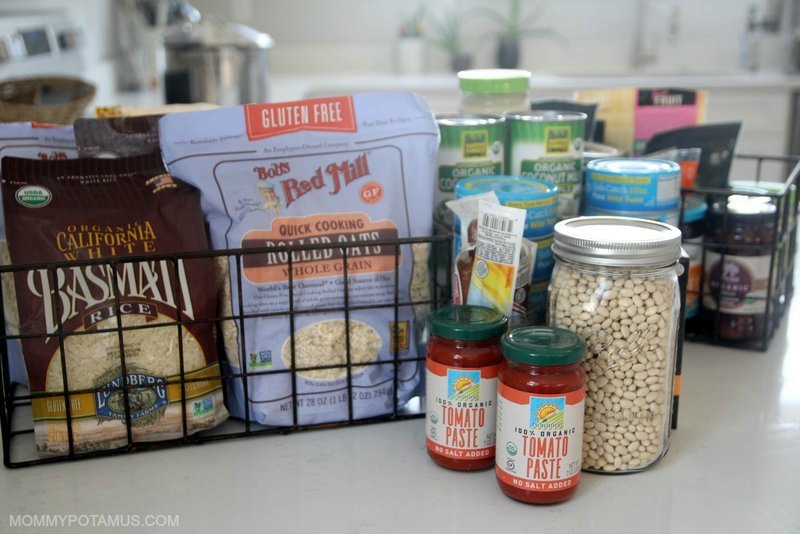
10. Stock Your Pantry
When my favorite staples on are on sale, I buy extra to stock my panty. That includes more expensive items like good olive oil, plus inexpensive ones like sprouted quinoa and lentils.
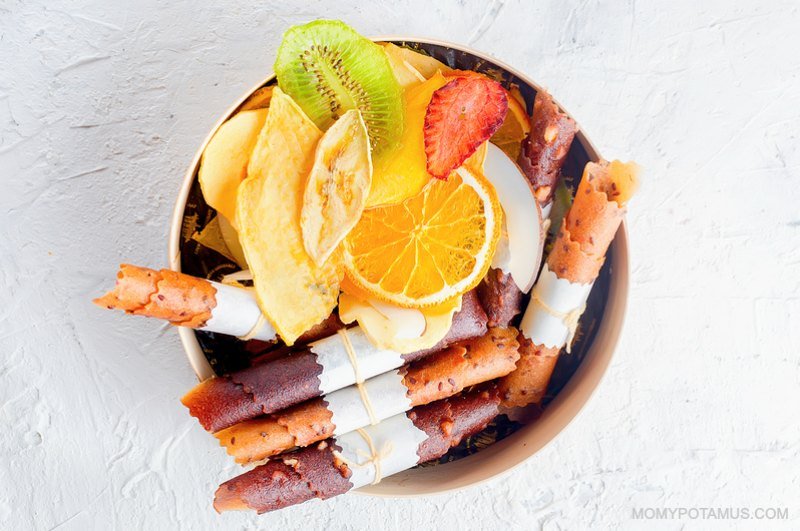
11. Invest in A Dehydrator
One of the best ways to maximize great deals on produce is to stock up and preserve them for later. Tomatoes can be dried for a zesty addition to Italian dishes later and fruits such as apples can be dried into chips, etc. Here are the details:
- Easy baked cinnamon apple chips
- How to dehydrate bananas, strawberries, cherries and more
- How to make beef jerky in a dehydrator
- How to make zesty oven (or dehydrator) dried tomatoes
- How to make garlic and onion powder (for half of what you’d pay at the store)
- How to dry herbs like basil, sage, thyme, dill oregano, rosemary, marjoram, lemon balm and mint
How to choose a dehydrator:
My first dehydrator was a $10 garage sale find. I wanted to make sure this was a piece of equipment I would actually use before investing in something heavy duty. Sure enough, I wore out the motor in less than a year, so I began shopping around for a better one.
This is the one I got. It has plastic trays which I usually line with parchment paper. There’s a new dehydrator out that has stainless steel trays, which I would probably buy if I was shopping for one now.
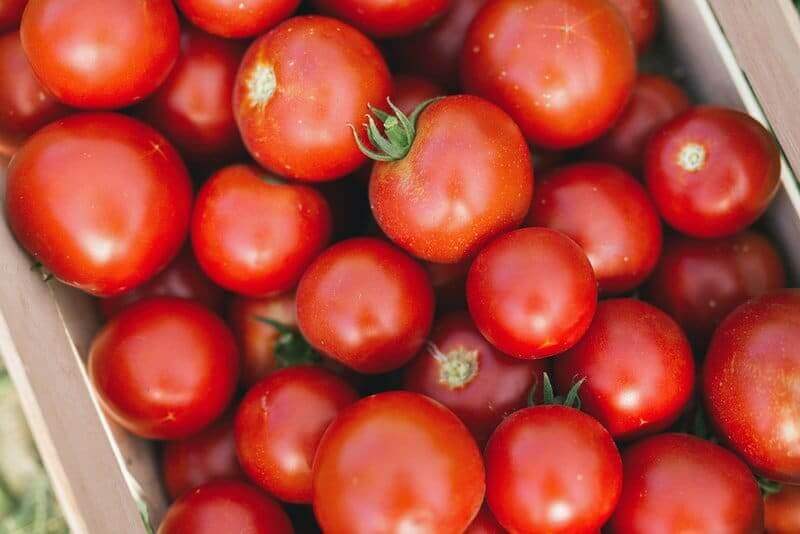
12. Join A CSA
Community Supported Agriculture (CSA) is a fabulous way for you to “own shares” in a local farm. Here’s how it works according to Local Harvest:
[A] farmer offers a certain number of ‘shares’ to the public. Typically the share consists of a box of vegetables, but other farm products may be included. Interested consumers purchase a share (aka a ‘membership’ or a ‘subscription’) and in return receive a box (bag, basket) of seasonal produce each week throughout the farming season.”
13. Invest In A Freezer
Meat is by far one of the more expensive items in my food budget, but buying in bulk can significantly reduce your cost per pound. Many years ago my husband and I invested in a standalone freezer to store our meat and other bulk purchases in, and it has paid for itself many times over.
A lot of produce, baked goods, and dairy can be frozen too. I’ve found that fresh fruits and berries, when frozen at the peak of freshness, are much more flavorful and affordable than berries that are imported in the off-season. They work beautifully in smoothies and even cobblers and crisps . . . this peach cobbler, for example. Learn more about which foods can and can’t be frozen here.
14. Keep Your Freezer Stocked With Meals . . .
For the days when things just don’t work out as planned, it’s pretty handy to have a backup meal or two. That’s why whenever I make freezable meals like chili, tortilla soup or Mexican-style beans I make a double batch and freeze half.
If you need more ideas, this grain-free freezer ecookbook from my friend Cara is awesome. Rather than requiring one long 10-12 hour cooking day, there are 5 sections that take 2-3 hours each so bulk cooking can be spread out over a weekend, a week of nap times, evenings, or whatever. When you wrap up you’ll have 22 breakfasts, 10 lunches, 16 dinners, 28 snacks/sides and 8 desserts.
15. Do A “No Spend” Challenge
For one week give yourself a personal “fridge and pantry cleanout” challenge to use every last item in the fridge, freezer(s), and pantry.
My husband and I are doing this right now and I’m always amazed at the meals we are able to come up with using the stuff we’ve been ignoring on the back shelf.
16. Host A Freezer Meal Prep Party
For many families, the biggest challenge to making budgets work is simply getting food on the table without resorting to eating out.
One way to get more done without missing out on social time is to coordinate a monthly freezer meal prep party with kids happily playing in another room (or helping out).
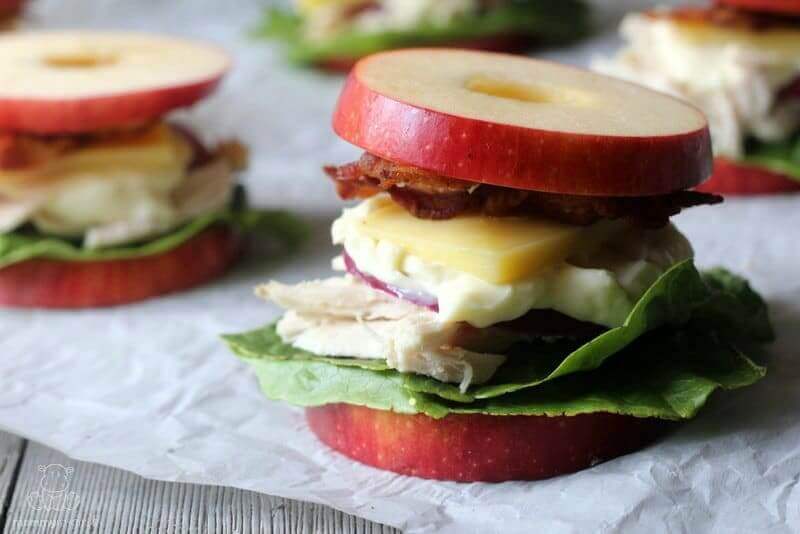
18. Be The Leftover Whisperer
Instead of roasting one whole chicken for dinner, roast two. It takes almost the same amount of time and effort, but you can use use the leftover chicken to make quick apple bacon sandwiches, chicken salad, lettuce wraps and more.
17. Help Out At A Farm or Farmer’s Market
If you have little ones that can help, too, this is a great way to teach them about sustainable agriculture and the value of food. Farmers often show their appreciation with boxes of extra produce and other goodies.

19. Make Your Own Fermented Foods
We all know that gut microbiome diversity is linked to overall health, so I make a point to get as many of the good guys into our bellies as possible. Sometimes that means taking a probiotic supplement, but when I’m up to it I prefer to get our beneficial bacteria through probiotic-rich foods such as:
- Homemade fizzy ginger ale and elderberry soda
- Thick and creamy yogurt
- Spicy kimchi
- Bubbly water kefir
- Tangy beet kvass
20. Make The Most of Affordable Staples
I’ve already touched on this a little, but when my husband and I need to tighten our budget we increase our use of affordable staples like:
- Dried beans (to make black bean dip, chili and refried beans)
- Lentils (for soups and stews)
- Quinoa (for stir fry)
- Sweet potatoes (for buffalo chicken stuffed sweet potatoes)
21. Learn Home Canning
Every year my mom brings me huge buckets of juicy tomatoes from her garden, which I dehydrate, and make into salsa, and serve with basil and feta for every single meal until they’re gone. But someday, I’m going to learn to can them using this awesome video class from Melissa Norris to use in soups and stews when tomatoes are out of season.
And then I’m going to take all the juicy summer peaches that are just a smidge bruised, on sale, and perfect for jam.
What did I miss? Share your tips for eating real food on a budget below!
(And of course, if you know a someone who is trying to save on groceries while eating healthy, please pass this along!)
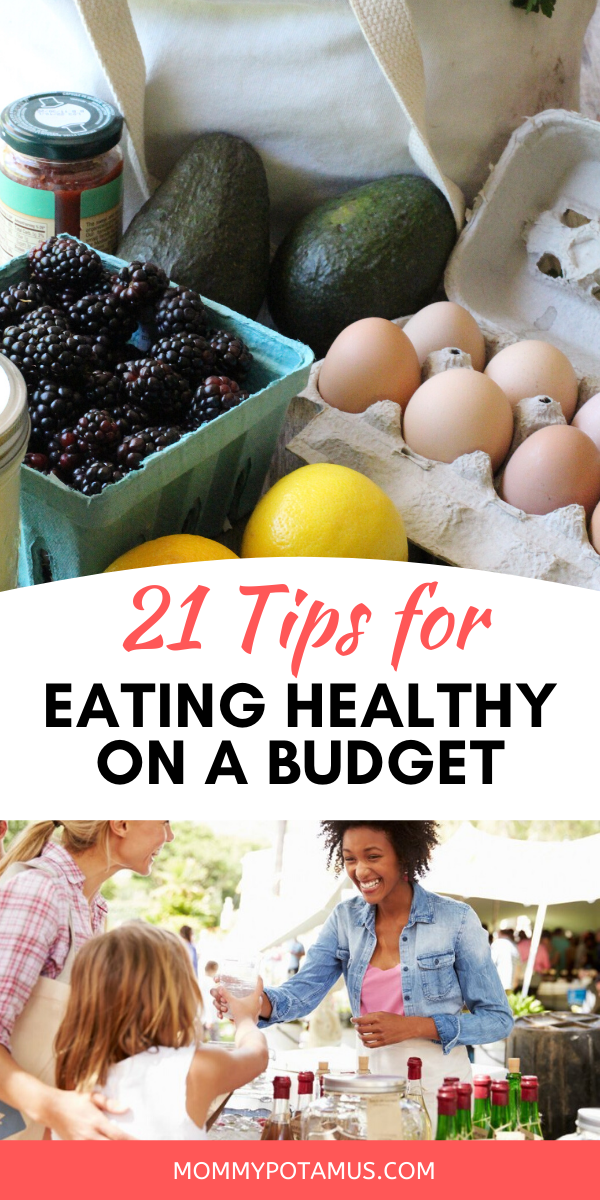



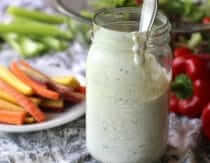


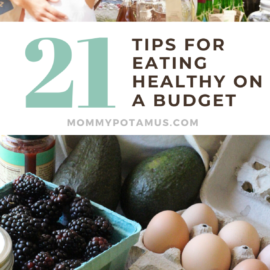
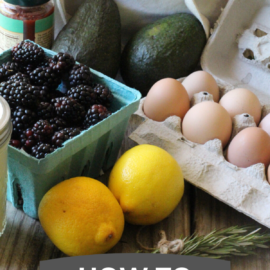
P.S. If you have a tip I didn’t include please let me know!
Love your site, but WHY is the tab with the connecting site options in the MIDDLE of what I am trying to read and type? I pressed “LIKE” for FB, but it did not Ever Go Away?
Hi DJ! So sorry your having trouble with it. A couple of people who have reported the same problem found that maximizing their browser to full screen resolved the issue. Hope that helps!
I haven’t read all the comments, so my suggestion may be here already. I bought a 2nd-hand Black & Decker All-In-One bread machine, and it may be our best investment EVER. If/when it breaks, it will be immediately replaced. It has a large horizontal pan with two paddles. I make nearly all of our bread in it. My old machine had a vertical pan, so I just made double batches of dough and baked them in the oven. I detest store-bought bread and love my homemade, and it costs even less than before, now that I bake it in the machine. I buy my baking supplies from a local bulk food store, using my own containers, which saves even more money and reduces my waste.
And the best feature is that my hubby uses the machine to make jam! He and our kids eat a fair bit of jam, so it’s awesome to be able to control the ingredients!
I didn’t see anything about canning. We can beef stew, chili, hamburger sauce mix for making in to spaghetti, etc., pea soup- all kinds of foods.
Patty, can you suggest a healthy preservative for canned prepared foods such as these? If none is necessary, how long do canned cooked soups tend to last? This would be great to have on hand. Thank you
Canning a way to preserve food, you don’t add preservatives. However, if you’re not a canner already then canning meats or tomatoes may not be the foods to start with, as they require a pressure cooker. For foods like jams and apple sauce you only need to use a hot water bath. Fermenting is the safest form or preserving food, and maybe a good place to start.
We have a pressure canner. We stock up (pun intended) on delicious chicken broths. I also make extra foods (chili) and can pressure can them as well! We use our pressure canner more than our water canner!
Use organ meats (cheap and healthy) and invest in whole turkey, chicken or bone-in ham – use the bones for broth, the juice for gravy, and the leftovers for everything.
Along with your local farmers market and ugly produce tips. I go to my local owned produce store. They often keep those ugly or ready to eat ripe options in a “clearance/discount” as towards the back. Sometimes by the bag with some other not so ripe or ugly mixed in. This helps me greatly if I’m needing something on a non farmers market day.
I want to also express using before losing your produce. Even if not using that day… Check to find the more ripened options and separate from the others. As produce ripens it emots natural gases that cause others nearby to also ripen quickly. This can work in your favor if you wish to ripen something quicker also. Bag those together… Doesn’t matter if same fruit or veggie.
well from where I am looking it looks like everything is being irradiated I am starting to think about all we can do to help ourselves is pray or totally grow/raise our own food
You mention bone broth, and I’d like to expand on that recommendation. Making your own veggie broth is one of my favorite free foods. Just save your onion, garlic, carrot, and celery scraps in a container in the freezer. I don’t even thaw them first – just seer them in a pan, and put them in my VitaClay with water, peppercorns, and any herbs I feel like tossing in for four hours. I’m sure you could also do this on the stove or in a slow cooker.
Another money saver is to join The Green Smoothie Girl’s group buy program. You can be the organizer for your community and help others save money while also having some of your food paid for for your efforts.
When my mother had chicken or turkey for supper, she always froze the bones afterwards, so she could make chicken dumpling soup for next time. When she peeled potatoes, she also froze the skins and made her best roasted garlic chips fried in olive oil.
How do you make home made fruit snacks? My kids love them and I want them to have a more natural fruit snack.
Nikki, You can find recipes for fruit gummies and fruit leathers here: https://mommypotamus.com/homemade-gummy-stars/ and https://mommypotamus.com/cultured-apricot-fruit-leather/.
Do you have a link to thrifty meal plans for the “Trim Healthy Mamma” eaters?
I don’t, sorry!
If you cut out grains, sugar, dairy and corn syrup you should naturally skimď down. I have to eat a paleo diet due to health problems and in doing so my husband lost 30 lbs. I’m thin so I eat alot of goats milk ice cream.
AWESOME post! Thanks for sharing all of your best tips with your readers. I am already doing many of these things, but there is always more to learn. I appreciate your thoughtfulness.
So glad you liked it, Lori! I still have a lot to learn, too 🙂
Great tips! My only concern about the “clean fifteen” is that onions are on there. Though they aren’t sprayed with as many pesticides, they are doused with anti sprouting chemicals after they are picked. You really notice the difference when you get organic onions. They HAVE to be refrigerated!
Whoa, I had no idea A.B. ! Thank you for letting me know – updating the post now. Funny thing is, I buy organic onions and I’ve never really had a problem with sprouting . . . guess I go through them too fast!
I typically buy organic onions and if I don’t refrigerate them they sprout pretty quickly! (I’m in the Tampa Bay Florida area so the warmer weather may make a difference). I have 2 that sprouted & I let them go. I am now going to plant them & see what happens! 🙂
By the way, awesome post with loads of great info! Thanks so much. 🙂
I have also read that root vegetables (even on the clean fifteen) probably don’t belong there, because although they are not sprayed directly with pesticides, they absorb everything from the soil around them. On a conventional farm, that could be higher levels than you’d like to think.
Here’s the secret if you are growing your own organic onions. When you pull them out of the ground, put them in a partially shaded spot in the garden and let them sit there for a few days until the stems are all dry. If you don’t want to leave them in the garden, then put them on a cookie sheet in a place where they can get where they can get lots of air circulation yet not sit in the direct sun. This closes the hole at the top and dries the roots at the bottom. Once they’re all dried, you can clean them up and remove the stems, but don’t cut the roots all the way off, leave about a 1/4 inch. I store them in my walk in pantry in a corrugated cardboard shoe box that has a 1 inch hole on either side. They last me several months if stored this way. If you put them in the fridge or in a plastic bag, they will spoil due to the moisture. Now my onions aren’t as big as the ones at the store, but they taste a lot better and due to their smaller size, I use the whole onion instead of having to put what’s left in the fridge where it will lose it’s flavor or spoil.
Honestly, this an awesome post. Probably my favorite ever in this category. Another thing would be pick your own farms (PYO) where you get awesome deals on naturally grown produce just by asking the farmer a few questions. Work shares with CSA’s are also awesome, you can work on the farm in exchange for a discounted share. Especially great if you already garden and want to learn more. Plus farmers are often great sources of undesirable edibles, like radish tops which make awesome pesto, broccoli leavest which are better than kale, and lots of others that they
oops… they’ll give for cheap or free in ehange for a little weeding time.
I was always happy to trade weeding for veggies, fruits and herbs when I was a market farmer. Working together was great for everyone.
This is fantastic, thank you!
I have never heard of using gelatin as a protein supplement, but makes total sense. How would you use it? can you stick it into a smoothie like you would any other form of protein powder?
Hey Krista! Gelatin tends to form little clumps of gel when mixed with water, so it could change the consistency a bit but yes – you can totally add it to creamy smoothies without changing the taste/texture much. I also put it in popsicles, soups, and just about anything I can think of 🙂
Dr Francis M. Pottenger MD used it as part of healing therapies in his sanatorium in CA back in the 30’s. Proven positive results. http://en.wikipedia.org/wiki/Francis_M._Pottenger,_Jr.
I use gelatin to make homemade fruit snacks…my kids love them and they aren’t getting the HFCS from the store-bought ones…win/win!
Yes, great post. Lots of good tips. The only thing I would add, and you elude to it (plus it’s not exactly unknown) is buying in bulk. All the health food stores I have ever shopped at have had great bulk sections where you could buy many organic and other healthier foods for a lot cheaper than their packaged counterparts, and as long as you have the room to store them, they can save you a lot.
Also, joining our local natural food co-op store has saved me a lot. Members get one 10% discount each month (you can choose when to use it), there are lots of sales and specials only for members, and if I want to order any bulk item I get 10% off (which I do- I regularly buy bags of organic oats and wheat from them and end up paying about the same price as I would for conventional white flour and conventional oatmeal… of course I have to grind/roll them myself, but I’m pretty sure my grain mill has paid for itself by now). All it cost was a one time fee of $100.
Heather,
What a fantastic post! You included a lot of great information. I wish you were my neighbor so we could share fermented foods and coconut oil moisturizer. 🙂 I’m off to make Food Renegade’s pickle relish now. Thanks for the ideas!
Great ideas, Kristine Winniford! I’ve heard of PYO berry patches in Texas and apple orchards in Maryland . . . maybe I can find some around here! The kids love collecting blackberries from the backyard 🙂
So glad you found it helpful, Kristin Coria McNulty!
Some stores will give you a discount of 5% or 10% off when you order items by the case or a whole bag of an item from the bulk section. Ask!
Great tip, Angie! Thank you!
Yes! Both Whole Foods and Sprouts do this with cases…it’s how I get 10% off my nice organic baby wipes, and our favorite protein bars, no coupons needed {:-)
The PYO berries & greens that I bought while on vacation a couple of years ago weren’t much (if any) cheaper than buying them at a store that was a lot closer than the farm, which meant gas $ spent & extra time used, with no savings on food – I was very disappointed. Looking into all options before you decide can help save time on things that aren’t going to save money.
Awesome post and great tips many of which I follow currently. I am having anxiety over CSAs though. Many of the local, organic CSAs use manure from grain fed cows. I don’t want my meat or dairy to come from grain fed animals and I certainly don’t want my veggies grown in grain-fed crap. I am growing my own garden but it definitely won’t meet my family’s needs. I’m hopeful I will find a farmer that uses grass-fed/pastured manure for veggies next year. 🙁
“Grain-fed crap” (haha! :D) Manure from grain-fed animals is still high in minerals that are depleted from the soil when food is grown & therefore needs to be replaces. Putting it in the soil that grows the local fresh produce is much better than eating veggies & fruits grown far away with no manure o other good, natural soil additives, picked before they’re ripe, then shipped & sometimes gassed to speed ripening, losing nutrient content the longer it’s been since they got picked…do the best you can, but don’t let the manure issue keep you from eating plenty of good nutritious food! 🙂
There are lots of ways to make your garden big enough to feed your whole family for a whole season (or year-round, if you preserve it); square-foot gardening, tower gardening (growing up instead of out), container gardening, etc. I use the square-foot method and it has fed 3 of us for a few years.
Good point, Angie Smith!
http://www.pickyourown.com is an awesome website to find PYO farms all over the country.
This may have changed…I found the site you mention at http://www.pickyourown.org. Thanks Sara!
Great post….I would add that for buying in bulk Amazon Subscribe and save is a saver!!!! You can often find non GMO beans and such in bulk at a GREAT price if you have room in your pantry as well as a great price on low mercury line caught skipjack tuna and many other things….I use the Shopping List function that way when I see something that I can use I can add it to my list so that I don’t have to hunt it down latter!!!! Everything that I buy is on a 6 month rotation that way if I don’t need it when the time comes I can tell Amazon just don’t send it. Works great when you live in an area devoid of healthfood stores, whole foods, trader joes or anything else remotely friendly to healthy eating!!!
These are great! Thanks for putting this together, I’m going to share it on the Healthy Child Healthy World Facebook page! 🙂
Thank you, Alicia! I feel so honored! 🙂
I’m so glad you said that about coupon shows. I’ve watched a few times and all I can think is – you’re stocking up on garbage and if you eat that kind of food, you’re not going to live long enough to finish your hoard!!
Love all your tips! I have yet to try fermented foods but it’s on my list. One tip I heard from someone once is that when you go to the grocery store, stick to the perimeter or outside aisles – try not to go down the middle aisles. If your grocery store is set up like most, the produce, dairy, and meat are all around the perimeter, and all the processed foods are in the middle aisles. I challenged myself to stay on the outside and now rarely go down the other aisles, except for things like dish/laundry soap, and baking supplies.
I also learned that tip about the grocery store. I believe it was on the documentary Food. Inc. I try to do the same thing and like you I rarely go down the middle aisles of the store 🙂
Thank you for this! With 5 of us in the family now (and a tandem nursing mama!) it’s getting more necessary all the time to stretch the food budget. 😉
This is WONDERFUL, thank you!
GREAT ideas! I’ve been doing #15 for the past two weeks, partly due to a tighter budget and partly because we were wasting a lot of what we were buying. This week I’ve cooked dinner every night and packed our lunches every day. Having fewer ingredients and a limited budget has forced me to be creative in a good way… as in, I FINALLY learned how to use the coconut flour I bought months ago! 🙂
Ha, Megan! I did the same thing with coconut flour!
Queastion – how can I make fermented condiments without whey? My boy has life-threatening food allergies to cow’s milk, eggs & nuts. He can’t even have a trace amount.
Hi Dusty! You might try a vegetable based starter like these http://villagegreennetwork.com/marketplace/fermented-food-starters?pid=27
You can make sauerkraut to start with, it requires no starter the fresh cabbages have all the natural bacteria already on them (get organic and fresh as possible) and then for the rest of your fermenting just add a couple of tablespoons of juice from your sauerkraut to it and it will be nice and vigorous 🙂 – try reading Wild Fermentation or The Art of Fermentation to learn more about fermenting without starters 🙂
Thanks, Heather! This is an amazingly useful and nicely organized post! Can’t wait to try out some of these tips.
Curious to know where you would find trust worthy cattle farmer who would sell part of a cow and then who butchers it? Sorry, city girl.
Hi Tammy! You might want to check out http://www.eatwild.org and http://www.localharvest.org
this is so helpful as i am trying to cut my costs on groceries. I must say i have a garden and i Love it sooo much! FYI for ya’ll out there. at least in washington state you can grow potatoes just about everywhere. I stuck a few old sprouting ones in my bark landscape area and had BEAUTIFUL potatoes all fall and into winter! my goal is to Plan my meals out and def the clean cupboard challenge!
Thanks mommypotamus!
Hey Heather, who was the beef farmer you bought from here? I’ve been wanting to find one to buy from! Thanks!
I bought from Paidom Meats (www.paidom.com) and Rehoboth Ranch (www.rehoboth.com) 🙂
What a great blog! I’m looking forward to exploring it further…love this list! Thanks!
I save up veggie scraps (onion and potato skins, ends of zucchini, herb stems, etc.) in a bag in the freezer until I have enough to throw in the pot (with or without bones) and make stock.
I love this idea, Danika! It always seems like such a waste to throw those scraps away, since I’m not currently composting. I’m going to start making veggie stock this way. I’ve never thought of doing this.
These are great tips, thanks so much for sharing. Sent to my mom as well 🙂
Get a couple of crockpots (hit the thrift store or flea market for them!). I own 4, from the little tiny one that is great for dips and for making salves and such, to a 6 quart, plus a big “roaster oven” pot, which is great for making huge batches of things like spaghetti sauce and chili to can. Some of the things that are in my crockpots at least weekly: dinner, of course!, yogurt (recipe at http://crockpot365.blogspot.com ), breakfast–put your oatmeal and water in the crockpot when you go to bed at night, turn it on low, and breakfast is ready when you get up, and broth, of course. It’s not unusual for us to have 2 or even 3 crocks in use at once–and thrift store ones run about $10, so they pay for themselves very quickly.
Also, if you live in an area where Azure Standard has a stop ( http://www.azurestandard.com )–you may have to give them a call, but they serve pretty much everything west of the Mississippi, and some places east of it, they are the best grocery co-op! They have a huge selection, you don’t always have to buy in huge bulk, and their prices are awesome!
I just found your website via pinterest, since I made a resolution to get these awful processed foods out of my house this year! I have shared with my kids articles about processed foods, and they have started reading labels as we convert our lifestyle to real food…it is nice to see them as grossed out as I am by it, but why did it take me 37 years to figure it out?? Anyways, great site!! Love your tips, budget strategies, and recipes. (the dehydrater is new for me, but I think I might give it a go.) Thanks!!!!!!
Love this post! Is there a specific dehydrator you reccommend?
Hi Ashley! I bought my first one at a garage sale and used it until it gave out. The next time around I invested in what I consider to be the best brand, Excalibur, because I knew it would be something I’d use often. Mine is the 10 tray but I rarely use more than 5 😀
With our budget continually tightening, I’ve resorted to figuring out how many calories we need to get per dollar spent on food and the calories per dollar of the foods we eat. My plan was to buy the higher-calorie foods first until we get enough calories for the month, and then if we have any money left, it can buy the nutritious low-calorie stuff like produce (we have a garden for summer produce, though), meat, bones, cod liver oil, etc. The way it looks now, we can’t afford anything except dry beans, whole grains, and cheaper non-organic butter that at least doesn’t have fake hormones in it. It’s a very good thing we have the garden and a few extra things in the freezer & pantry…if you have any new ideas, I’d love to hear them!
Amazing list!!!! I never thought about meal plans saving me money since it cuts down on the waste.
What an AMAZING list of tips!
Do you buy your coconut oil in plastic containers? If yes, do you have any concerns over the plastic?
Wonderful post!
Thank you for posting. My family was recently on track for more healthy eating on a budget until we got pregnant with our second child and I am now currently on bed rest. I think that after we have him in a couple of months, we can then begin again (I am trying to things pretty simple for my husband) and your tips will come in very handy!
All great advice! I really enjoy the fact that your suggestions are based on saving money, but eating a healthy diet. My wife and I are pescatarian and try to eat healthy, support local businesses, and do what we can to be environmentally-friendly.
I skimmed this before but once again I realize how vital these points are. THANK YOU for posting it and leaving it up for us poor folks that need to, want to eat healthier. I mean, really, no one can afford not too. And those who are Christians need to realize that if they know what they are eating is bad and they still do it with abandonment, they are grieving the Holy Spirit – our bodies are the temple of the Lord!
Thank you so much for sharing, love your blog!
Love it! I pinned this on pinterest as a part of the vitamix give away, and also because it is AWESOME! Thanks
hello everybody
Im looking for your tahini chocolate bites recipe, is there a link u can send if u do have the time.. thanks😊
Stay safe!
Hi Marti, you can find them here: https://mommypotamus.com/chocolate-chip-blondies-recipe/
I read somewhere on your blog that you use a certain type of fish oil. But now I can’t find it anywhere. Could you please tell me the name of it. I’m interested in trying it. Thanks so much!
Most recommend the Green Pastures Fermented Cod Liver Oil…www.greenpastures.org. I just tried it for the first time (the cinnamon flavored) and I love it…it doesn’t taste like fish oil at all!
I really appreciate this list, very helpful reminder and concise too!
I am new at this , Im reading everything I can trying to learn as much as I can . I have just become a stay at home Mommy at age 46,after working tons of hours every week, This organic /fresh wasnt a option,I thought we where eating well because the package said so ,so I had no idea about the junk that is in the food I was eating and making for my family . As I found out I went to making everything fresh , Holy smokes,this is a giant task , it takes me like hours a day cooking dinner ,its all good stuff but it cost so much buying organic and very time consuming ! In saying that I love this site ,It is really good and Im learning SO MUCH!!!! thank you so much ! Anyone and everyone who has any start up help for me please share !!!!!!!!
Christina,
It’s all about the slowcooker!!! (Or crockpot). There are sites galore to help you out in the recipe arena. But it literally costs pennies a day (since you have it running for hours at a time, compare it to the stove top). Oh wait > http://nourishedkitchen.com/low-energy-cooking/ (if that doesn’t create a link, copy/paste). Bone broths are a must. No more wasted money on supplements (I just drank some, I’m brewing a batch as I type). So utterly comforting. Oh, helps out BIG time with cellulite. As a raw vegan for 6+ years, I tried this and animal proteins (mostly fish for now) in my diet, 1st thing to help! Bone broths are loaded with collagen (cellulite is void of collagen), this helps with the cellular structure of our cells. It will transform your fatty deposits into a tight, leaner physique.
Check these out for slowcooker/freezer methods. This WILL help out your family and save you time/$$$! >>
http://www.mamaandbabylove.com/2011/04/05/freezer-cooking-with-slow-cooker-recipes/
http://onceamonthmeals.com/oamm_cooking_type/slow-cooker/
Just search online for slow cooker/crock pot, and/or freezer recipes.
You’re FABULOUS Christine. You bust a*s everyday for everyone else. Make sure you take a much needed break for yourself. God knows you need it!
Great article! Tons of great tips! Thank you! 🙂
When I have fruit that is getting a little ripe for eating pleasure, I cut them up, put on a cookie sheet to fast freeze separately, then bag them up and use them for smoothies. So now we don’t have any fruit that getes wasted or so ripe it tastes funny either.
This is a great post – really liked the coconut milk tip!
Buying in bulk can be a great way to save. If you’re anywhere in or around TN, check out the natural foods co-op our family runs at BulkNaturalFoods.com. Fruit fresh from the orchard in bulk, whole grains, and some hard-to-find traditional foods are some of our regular items.
Thanks for the ideas, Heather! And I’m SO glad to learn that conventional onions are chemical-ized.
I loved this post! There are so many times when I want to just take the easy route in food – it is good to be reminded of what matters more: my momentary satisfaction or my future health and happiness with that of my family’s.
I found both my freezer and the baby fridge I use for a root cellar on Craig’s list for 50$ each!. Also a Freezer that is NOT frost free is a better choice for long term storage than the frost free type. It has to do with the defrost cycle that frost free freezers go through every day. It will lower the likely hood of freezer burn on long term storage. I NEVER have freezer burn issues in my freezer and I have stuff that has been in there longer than it should be (like 1.5 years :-p). LOL I am currently trying to work my way through all the meat before restocking because of that. Oh and with regards to the amount of times you will need to defrost the non frost free freezer… depends on how often you open it .. I transfer my meat for the week to fridge freezer once a week. I have had freezer for 4 years and had to defrost once!!!!
Great post….and lots of great comments!!
sorry if this was mentioned. I check to see what roast is on sale. For example, Sunday we had an eye of round roast dinner. Monday night I used some of the roast for a beef stroganoff. Hubby and I both took sandwich for lunch on Tues and I made Asian stoup with the rest of the meat –we had that for Weds. night and lunch Thurs. So, for a $8 roast I got dinner 3 nights and lunch for 2 days AND froze enough of the stroganoff (without the noodles) for us to have early next month. I’ve done the same thing with a pork sirloin roast and with chicken and turkey. Also, when I make a meat sauce, I only use tomatoes, onion and garlic–as this point if it very meaty and not too saucy. I freeze into 2-cup portions. That way when I take it out of the freezer, I can season it for different things–spaghetti, sloppy joes, tacos etc.
Love love LOVE this post! I teach cooking lessons and coach people through transitioning to healthier eating choices and I’ve added this to my list of resources. Thanks for sharing!
This is an awesome list! I truly believe that almost any family can eat organic, whole foods if they make it a priority. We’ve prioritized organic food and put it ahead of many other things, like fancy clothes and vacations, and even cellphones. I don’t regret it for a minute! Maybe someday we will have the fancy clothes and vacations, too 😉 haha
https://www.amazon.com/Great-Lakes-Unflavored-Gelatin-16-Ounce/dp/B0092T29PE/ref=pd_sbs_gro_3
this link has a good price on gelatin, 3 lbs for $39.75 plus shipping.
I love these tips… pinned it for the Cast Iron Giveaway!
I love these tips! I’m pretty cheap and already do some of these but learned some new ones to try.
My latest budget saver is that whenever I’m using any sort of citrus for a recipe, or even pering to eat it, I zest it first and freeze the zest. It stays wonderfully fresh in the freezer and can be tossed into numerous recipes for flavor. It may seem like a small thing but I hate any thing going to waste. I realized one day how much peel I was throwing away every time. Then sometimes I needed zest and had to use a piece of citrus when it Andy being eaten. Both ways something was wasted. Now, I can grab some zest out of the freezer even if I don’t have the fruit on hand!
Love these tips! Thank you. I pinned them to help me remember to do them.
Hunt and fish for your food. Just about anywhere in the nation you can be an hour or two drive from good hunting and fishing locations. Of course, be careful about fish from the Atlantic ocean. All deer, elk, moose, bear, duck, rabbit, geese, etc are grass, acorn, etc feed. They sure aren’t getting antibiotics and such! 🙂 And fish, as long as it is from clean water, is also great. We live in the Rocky Mountains and heavily supplement our food with wild game and whatever fish we can catch. We’ve eaten snowshoe hair, elk, deer, fish, grouse, and goose. And as long as you hunt and fish in state, tags and licenses are often quite cheap. We also supplement with meat rabbits we raise on our city property. Four does and buck can produce 360 pounds of meat in one year with a three month break for winter. And you can totally control what they are eating.
Awesome tips. some more time consuming then others, but all are awesome money savers!
Pinned! ^_^
Healthy Food on a Budget http://www.pinterest.com/pin/457396905876416993/
In the current, one can always use tips on how to still eat healthy and save in the process.
Super helpful! Can’t wait to try these tips out 🙂
This is the post I pinned as a favorite for the giveaway!
I pinned this post for the giveaway!
I just pinned this post! I’m new to the “crunchy living” and am obsessed with getting as much information as I can. This post is awesome because I want our family to eat fresh and healthy but we have a family of 7. That can get way expensive!! I really appreciate the tips!
Pinned this!
I pinned the post on how to make a kombucha-rita!!!
This is so nice to have and sit down and read when I feel a bit off the right track, following the lazy and easy way of cooking or being disappointment about a low budget- I can remember that it is possible to work and establish more efficient ways for long term nutritional preservation in the kitchen! We can do this mommas!
Thank you so much. This article is very helpful.
Not sure if this is where I am suppose to leave this comment but I pinned a post of yours to pinterest for the stainless steel cookware giveaway. I sure would love to give this to my daughter who has nasty Teflon pots and pans that are “shedding”!!!! Not healthy at all. Thank you so much for all that you do for your readers/followers, etc.
Pinned this for the cookware giveaway.
We grow our own garden for tomatoes, green beans and jalapenos. We are going to try a bunch of new veggies this year though and I hope we will have decent luck! I read about some people saying that their garden wont produce enough for their family. I’m wondering if its a space issues that holds them back? There are a LOT of great tips out there on how to garden in EXTREMELY tight spaces and how some vegetables benefit being grown next to specific other vegetables. (Squash or beans grown on an angled trellis provides much needed shade to lettuces.)
My significant other teases me for all of the “butt ends” of veggies I have started around the house, but its been beneficial to us! During the winter, when we buy organic veggies like lettuce and celery, we cut the “butt end” or root end of the head off (about two inches) and put it in a shallow dish of water. This allows the veggies to sprout again and be replanted. It stretches out dollar a little further for when times get a bit tough. We do this with our own veggies as well. (Potatoes, garlic, and onions are great for replanting!)
We eat a lot of yogurt and make a lot of smoothies so we make our own yogurt.
I love this post and all the comments!
It’s not just space, unfortunately, it’s also the start-up costs of dealing with soil contamination or lack of topsoil, shade, permission from landlords, wildlife/fences, breaking ground, etc. Despite being an enthused gardener, I’ve done very little gardening in my last two rentals because of the general situation and off-site community garden options were fairly distant. As an owner, some of this is probably easier to deal with (i.e. cutting a few branches off a tree) but can still be quite pricey if you need more than minor adjustments. A basic DIY deer-fence can run $300 alone, assuming you already have the tools to put it up.
Thanks for the info. I picked this as my fave pin for the giveaway.
I buy organic dried goods from my local market in the bulk food section and keep it in sealed storage containers. Things like oatmeal (organic for the same or cheaper then Quaker), lentils, dried bean, nuts and even spices. I grow a garden and I buy organic items in bulk from Costco. If it’s too much for my household, then I send some to my Mom’s house… Still cheaper then buying organic at the grocery store. I’ve learned over the years to grow the things that we really use and can store for winter. Things like tomatoes, tomatillos, butternut squash, spaghetti squash, green beans and kale.
Ummm, i do a lot of the things usggested in here. I am a full time college student, so budget is extremely limited. I out in the extra time and effort to research how to feed my body, rather than making sure my stomach is full. I now eat six small meals a day, and have seen my grocery bill drop dramatically. 🙂
I wouldn’t call sweet potatoes clean by any means, they are a root vegetable so they absorb all the nastiness in the ground from the pesticides they are sprayed with PLUS the run off from other veggies that were sprayed. Being a root they absorb all of it so I don’t see how they are clean? Plus sweet potatos are also sprayed with the anti-sprouting agent.
I am really excited about trying the sandwich bread you mentioned. My only problem is I can’t find sprouted flour. The link for the recipe ddidn’t have a link for sprouted flour either. Where do you get your sprouted flour?
Thanks so much!
These are all great tips! Thanks!
One of the things that I’ve noticed has helped us out is starting to make my own pasta. We eat it anywhere between 4 and 10 times a week. The boxed stuff is actually more expensive than what I make, and we have to eat a whole lot more of it to be full. And it’s easy and fun to make.
Great article with some excellent advice. I am definitely guilty of heading out for one item and coming back with 7, 8, or 9 plus! Though what the heck made you decide to put LARD on your face?! Never would have thought of that one! Thanks for the great read x
These are all terrific suggestions, some of which I employ myself, some I’m grateful to add to my arsenal. I love your sense of humor! Sharing this on a Facebook page I curate called Cooking with Whole Grains & Whole Foods.
Love, love, love this post. One note…the links to the “make a meal plan” are no longer valid. I had to google the names to find their new website addresses. Just needs a quick update. Thanks again, I love your site!
Sweet potatoes grown conventionally are mostly sprayed with something called Bud-nip to prevent it from sprouting and such after they are picked. Bananas are gassed to help speed up the ripening process. Personally I go for the organic banannas as its usually rather cheap per pound and they are a healthy snack, plus there are so many things you can make with them like a grain free pancake. Also i know some people say its ok to eat non organic oranges but having lived near an orange grove in FL they spray those things so much its not funny, not to mention they dont always pay attention to where they are spraying><. So for that reason I avoid them.. plus after having organic oranges or homegrown ones the conventional ones have no flavor lol. Also another good tip is to grow your own of what you can. Living in FL means i can grow little sized bananas, avocados and so much more. It make take a while to et some going and to the fruiting stage but when they come in I get a surplus of generally more than I can use and this is where bartering comes in handy ^^.
Wow, great post Heather! These tips are a huge help, both for my tummy and for my money. I noticed that the healthy foods that I love to eat can cost a lot. Definitely doing the gardening and make my salad fresh from the yard.
Some great ideas here! But you should know that gelatin isn’t a protein supplement. While it is, strictly speaking, a protein, it’s non-nutritive, meaning or bodies don’t digest it and don’t get nutrients from it. That’s why it doesn’t have any calories. It’s kind of like eating hair – it’s made of proteins or body can’t use.
Hi there,
I love your blog and this one in particular has been a great resource.
Do you make your own veggie stock? I save all of my trimmings (peelings, tops, and ends of just about any sweeter veg) in a container in the freezer. When it gets full I make a big ol’ pot and then strain and freeze in 1 cup containers (strained bits go into compost). It’s a great way to use up everything and add extra nutrients and flavor to lots of meals!
Thanks for all your time and effort to create this site, people like you truly help to make the world better for all.
Just wanted to add a note- We just bought a new stove and it comes with a “Dehydrate” setting. I haven’t used it yet, but the things electric ovens can do!
Get some chickens feed them your scraps and then consume their eggs and even eat them too. And if they get too old… Use them for stock!
thanx for sharing valuable post.
This is an amazing list! Thanks for doing all the hard work and sharing! I will be bookmarking for future reference as well as spreading the word. I’ve been on the edge about buying a dehydrator for a while now… I think I’ll follow your advice on starting with a cheaper one!
I’m fortunate to have a food co-op in my area, membership is $200 but even without a membership the prices are fair and they often have one or two things marked down. They have a lot of bulk organic beans, rices and other grains at reasonable prices. They also have bulk teas and items like elderberry, comfrey and calendula that I use.
I have always used a pressure cooker but about 6 months ago I invested in an electric Instant Pot pressure cooker (I found it at 20% off on Amazon for just a short while) and it’s my new best friend. It has a removable stainless steel bucket so I can fill it and put it in the refrigerator so it’s ready to put in and cook when I’m ready. Even a hearty bean soup with non-presoaked beans will cook in an hour so I can get some other things done while dinner is cooking. It’s really great and I’m still learning all the things I can do with it. Meatless meals a few times a week make for big savings. I buy goat milk and eggs from local farmers, I have a better idea of what I’m eating that way. I can’t drink or use dairy products from the store because I thought for years that I was lactose intolerant but I can drink raw milk, cow or goat, with no problem and I know it’s fresh. I make my own yogurt, it’s super easy and cheaper.
I check the sale paper every week, it comes out on Tuesday here, and there is usually a couple of organic things on sale so I take advantage. One store almost always has bunches of organic kale for 99 cents. Learn which stores have what for the best prices and you’ll save.
Great tips!! I agree with everything above. In my experience, real food is not more expensvie than processed foods. Buying fresh fruits and vegetables and good quality meats makes us stay full longer so we don’t need as much food. Also, I am always cooking enough for leftovers so that is what I eat 99% of the time for lunch, which saves money as well! I have found that meal planning out EACH meal and snack is the best way to save money so that you have a plan and aren’t forced to make any game time decisions and spend money that you don’t want to. Great advice here with all the other tips as well!
Since I am living alone it’s been a major problem to afford healthy food. Thanks it really helped me.
Great post! You’re probably not monitoring comments on it any more and this is a rather personal question, but I am curious what it costs per month to feed real food (as you’ve outlined, above) to a family of 4-5 in the USA? I live in Canada and recently wrote a blog post outlining our monthly costs and am looking to reduce them, but I’m also fascinated by regional real food costs within North America. So, if you or anyone else would like to share, I’d love to read! Cheers.
Oh my god, so much good stuff in this post! Especially the quick condiment recipes. This is a tab I’m keeping open for a while for reference 🙂
Buy Organic! Seasonal! On Sale! U-Pick!
do you have any article about damaged dry hair if you have then plz give me the link
Nice Article it’s really helpful
Great list! Making your own fermented foods is a really easy and affodable way to ensure the health of your family. I would also add making your own bread like sourdough bread (for those who buy bread on a regular basis). Sourdough starters are a great addition to the kitchen because they are so versatile you can use it to make anything from bread to pancakes and cakes and muffins.
I am continually blessed by your blog. Thank you for sharing your info, knowledge, and tips.
I like most of these tips… However, I have never found any of the local farmers discounting their products at the end of the market. I see that tip a lot – maybe it’s a regional thing. And I frequent 3 different ones. Also, while I do use CSAs, I have not found them to be cheaper than the grocery store. And the PYOs – again, not necessarily cheaper than the grocery store (especially when considering sales). We have quite a few in our area and I take the kids more as entertainment 🙂 It’s an outing and in the end we have some fresh produce.
Good morning,
Thank you for this blog post on frugal healthy eating. How could I best share this with my functional medicine patients that could really use these kind of tips? link to your site? guest blog on my site? Please email when you have a chance so I can get this out to my patients and audience.
Eric Potter Functional MD
Hi, Heather!
Thank you for so many tips on healthy living. I’m glad that you included the clean 15 list of foods. That’s a great way to save money on your grocery budget and still ensure you’re getting quality produce. I also agree with you on the benefits of using a slow cooker. It’s a great tool and allows you to cook healthy food easily.
One tip that I have for making the most of your food budget is to find ways to make your leftovers seem new. This will reduce the amount of food you end up throwing out. You just need to get creative. If you find yourself with a lot of leftover vegetables at the end of the week, turn them into a soup. If you have a pot of leftover tomato sauce in your refrigerator, but don’t feel like eating pasta again, then use that sauce to make chili.